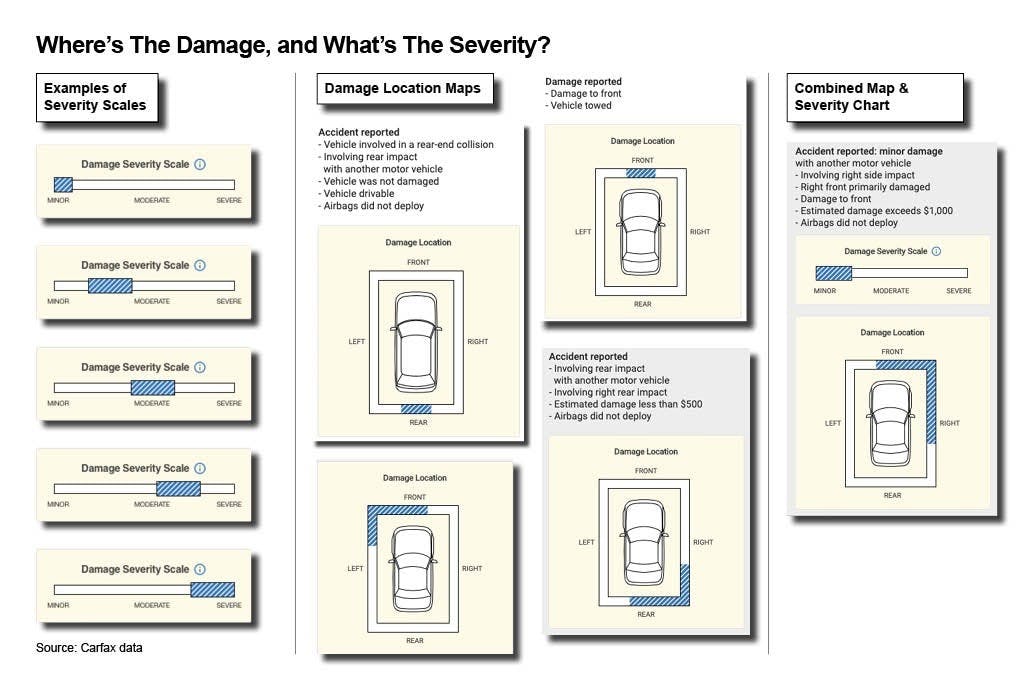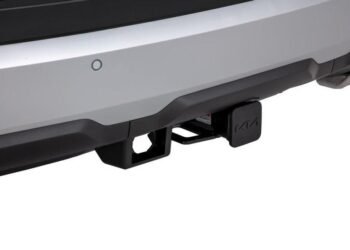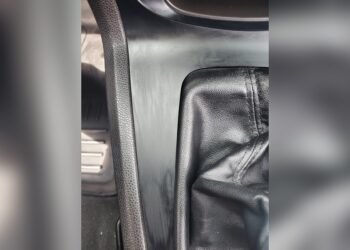If you’re browsing used cars and come across a Carfax report that mentions “Functional Damage Reported,” you might feel unsure about what that means for your potential purchase. Does it mean the car is unsafe?
Can you still trust it to run smoothly? Understanding this term is key before making any decisions. Functional damage means the vehicle has some issues that affect how parts work but doesn’t stop the car from being driven. Knowing exactly what kind of damage you’re dealing with—and how it might affect your daily driving—can help you make a smarter, safer choice.
You’ll learn what functional damage means, how to spot it, and what steps to take if you’re thinking about buying a car with this kind of report. Keep reading to protect your investment and avoid surprises down the road.
Functional Damage Explained
Functional damage on a Carfax report means damage that affects how a part of the vehicle works. It is not just about how the car looks but how it performs. This type of damage can impact parts that are essential for the car’s operation.
Understanding functional damage helps buyers make better decisions. It shows issues that may need repair before the car works properly again. This section explains the difference between functional and cosmetic damage, common examples, and how it affects driving.
Difference From Cosmetic Damage
Cosmetic damage only affects the car’s appearance. Scratches, dents, or paint chips are common cosmetic problems. These do not change how the vehicle runs or its safety.
Functional damage affects parts that make the car work. Problems like broken lights, faulty doors, or engine issues fall here. These need fixing for the car to operate safely and smoothly.
Common Types Of Functional Damage
Examples include damaged door latches that won’t close. Bent hoods that won’t open correctly also count. Malfunctioning brakes, broken headlights, and engine troubles are common functional damages.
These damages often require repair before the vehicle is safe to drive. Some may seem minor but can cause bigger problems if ignored. Always check for these issues on a Carfax report.
Impact On Vehicle Operation
Functional damage can affect safety and driving comfort. A broken door latch may prevent doors from closing properly. Faulty lights reduce visibility at night or in bad weather.
Engine or brake problems can cause serious risks on the road. These damages may lead to vehicle breakdowns or accidents. Repairing functional damage is important to keep the car reliable and safe.

Credit: www.reddit.com
Carfax Damage Reporting
Carfax damage reporting offers detailed insights into a vehicle’s history. It helps buyers understand past damages that may affect car performance or safety. These reports include various damage types, including functional and structural. Understanding the differences is crucial before purchasing a used car.
How Functional Damage Appears On Reports
Functional damage on Carfax reports shows issues affecting a car’s operation. It may list problems like broken door locks or damaged lights. These damages do not stop the car from being driven. The report describes what part was affected and how it impacts the vehicle’s use.
Sources Of Damage Information
Carfax collects damage data from repair shops, insurance claims, and police records. Repair shops report damages when they fix a vehicle. Insurance companies add data from claims made after accidents or incidents. This variety helps create a detailed damage history for every car.
Distinguishing Functional Vs Structural Damage
Functional damage means a part works poorly but the car still runs. Examples include stuck doors or broken headlights. Structural damage affects the car’s frame or safety and is more serious. Structural issues can make a car unsafe to drive. Buyers should carefully check the type of damage before deciding.
Risks Of Buying A Car With Functional Damage
Buying a car with functional damage carries several risks. This type of damage affects how parts of the vehicle work. It does not always stop the car from running, but problems may still exist. Understanding these risks helps you make a smarter decision.
Potential Hidden Issues
Functional damage may hide other problems. Some issues are not visible during a quick inspection. Damaged parts can cause wear on other components. This hidden damage may lead to more serious failures later. A detailed check by a professional is important.
Effect On Safety And Performance
Functional damage can reduce vehicle safety. Broken parts might not protect you well in a crash. The car’s handling and braking could also be affected. Performance problems can make driving less smooth and less reliable. Safety should always be a top priority.
Long-term Repair Costs
Repairing functional damage often costs more than expected. Some parts may need full replacement, not just repair. Ignoring these issues can lead to bigger expenses later. Repair quality varies, affecting the car’s future value. Planning for repair costs avoids surprises.
Evaluating A Vehicle With Functional Damage
Evaluating a vehicle with functional damage requires careful attention. Functional damage means some parts of the car do not work as they should. The vehicle might still be drivable, but certain functions are affected. Understanding the extent of this damage is essential before buying or selling a car. Proper evaluation helps avoid costly repairs and ensures safety on the road.
Importance Of Professional Inspection
A professional inspection uncovers hidden issues. Mechanics can spot problems that are not visible to the eye. They check engine parts, electronics, and safety features. Their expertise helps assess the true condition of the vehicle. A detailed report guides buyers in making informed decisions. Skipping this step can lead to unexpected expenses later.
Reviewing Repair Records
Repair records reveal the car’s damage history. These documents show what parts were fixed and when. They help confirm if repairs were done properly. Knowing the quality of past repairs prevents future breakdowns. Buyers should ask for detailed records from the seller. This step adds confidence in the vehicle’s reliability.
Assessing Current Condition
Check how the vehicle performs now. Test all functions related to the reported damage. Doors, lights, engine, and electronics must work correctly. Look for signs of ongoing problems or poor repairs. A test drive offers insight into real-world performance. This assessment helps decide if the car is worth buying.
Negotiating Price And Value
Negotiating the price and value of a car with a Carfax Functional Damage Report requires careful thought. This report shows damage that impacts how a part of the car works. It does not mean the car cannot be driven. Understanding this helps you make smart decisions when buying.
How Damage Affects Market Value
Functional damage lowers a car’s market value. Buyers see it as a risk or a future cost. Even small issues can reduce the price. Sellers may accept less to sell the car quickly. The damage report makes the car less attractive than similar models without damage.
Using Damage History In Price Negotiation
Use the damage history to negotiate a better price. Point out the cost to fix the problem. Show how the damage affects the car’s operation or resale value. This gives you leverage to ask for a discount. Sellers may agree to lower the price instead of repairing the car.
Balancing Savings And Repair Investment
Buying a damaged car can save money upfront. Repair costs may reduce these savings. Check the repair price before making an offer. Balance the lower price against what you pay to fix the damage. Choose a car that fits your budget for purchase and repairs.

Credit: www.reddit.com
When Functional Damage Is Acceptable
Functional damage on a CARFAX report shows that some parts of the car were harmed. These parts may not work as they should. This type of damage may still be okay in certain situations. Understanding when functional damage is acceptable helps you make a smart choice.
Not all functional damage means the car is unsafe or unusable. Some repairs may restore the vehicle fully. Knowing the details helps you decide if the car fits your needs and budget.
Experience With Similar Repairs
Having experience with similar repairs makes functional damage less risky. If you know how to fix or manage such issues, the car can be a good buy. Mechanics or DIYers may find these cars easier to handle. This knowledge reduces repair costs and surprises.
Minor Damage Versus Major Impact
Minor functional damage often involves small parts or systems. Examples include a bent mirror or a broken latch. These issues do not affect the car’s safety or main functions. Major impact damage affects vital parts like the engine or frame. Avoid cars with serious structural harm to stay safe.
Safe Driving Considerations
Safety is the top priority when choosing a car with functional damage. Ensure the damage does not affect brakes, steering, or airbags. Test drive the vehicle to check for any problems. A professional inspection can confirm the car is safe to drive. Never compromise on essential safety features.
Red Flags In Carfax Reports
Carfax reports help buyers understand a vehicle’s history. They reveal essential details about accidents, repairs, and damage. Some entries act as warning signs. These red flags warn about possible hidden problems. Knowing these signs helps avoid costly mistakes.
Multiple Damage Incidents
Repeated damage entries show the car had several issues. Each repair might hide new or worsened problems. Multiple incidents can mean the vehicle was not well cared for. This raises concerns about the car’s reliability and safety. Buyers should be cautious with such cars.
Unreported Or Incomplete Damage
Sometimes, damage is not fully documented in Carfax reports. Repairs might be missing or only partially noted. This incomplete data can hide serious functional problems. Always inspect the car carefully and ask for a full history. Unreported damage may lead to unexpected costs.
Signs To Walk Away
Certain signs on a Carfax report are clear warnings. Functional damage that affects driving safety is one. Structural issues that weaken the car’s frame are another. If the report shows repeated severe damage or missing info, it is best to avoid the vehicle. Safety and future expenses are at risk.
Steps To Take Before Buying
Buying a car with a Carfax Functional Damage Report requires caution and preparation. Functional damage means some parts of the vehicle do not work as they should. This damage can affect how safe and reliable the car is. Taking the right steps before buying helps avoid surprises and costly repairs later. Follow these key actions to make an informed decision.
Requesting Detailed Damage Information
Ask the seller for a full description of the functional damage. Get repair records and photos if possible. Know what parts were damaged and how they were fixed. This information reveals the true condition of the car. It also shows if the repairs were done professionally. Never rely only on the Carfax report summary.
Seeking Expert Opinions
Have a trusted mechanic inspect the vehicle carefully. They can identify hidden problems and evaluate repair quality. Experts understand how functional damage affects car safety and performance. Their advice helps decide if the car is worth buying. Avoid skipping this step even if the car looks good.
Planning For Future Maintenance
Functional damage may cause ongoing issues. Prepare for possible future repairs and maintenance costs. Check if replacement parts are easy to find and affordable. Budget extra money for unexpected fixes. Knowing this upfront prevents financial strain after purchase.

Credit: www.carfax.com
Frequently Asked Questions
Is It Okay To Buy A Car With Functional Damage?
Buying a car with functional damage can be okay if repairs are verified by a trusted mechanic. Ensure the damage doesn’t affect safety or drivability. Always request detailed repair records and consider potential future costs before purchasing.
What Does It Mean When It Says Damage Reported On Carfax?
“Damage reported” on CARFAX means the vehicle has sustained damage affecting function but remains drivable. It differs from cosmetic damage and may impact parts like doors or bumpers. Always get a professional inspection to verify repairs and ensure no hidden issues exist.
What Does Functional Damage Mean On Carfax Reddit?
Functional damage on a CARFAX report means a part of the car was damaged and repaired but still allowed the vehicle to be driven safely. It affects the normal operation of components, like a misaligned hood or broken taillight, without disabling the vehicle.
What Is A Red Flag On A Carfax Report?
A red flag on a CARFAX report indicates serious issues like multiple accidents or unreported damage. It signals potential hidden problems.
What Does “functional Damage” Mean On A Carfax Report?
Functional damage means a part of the car was damaged and repaired to restore its operation.
Conclusion
A Carfax Functional Damage Report shows parts not working properly. The car may still drive but needs repairs. Always check the report before buying any vehicle. Understanding functional damage helps avoid unexpected costs later. Choose cars with clear reports for safer purchases.
Keep in mind, small issues can grow if ignored. Use this knowledge to make smart, informed decisions.

















